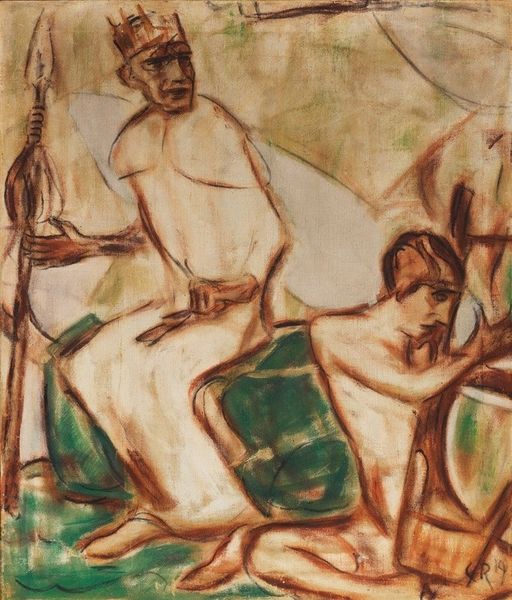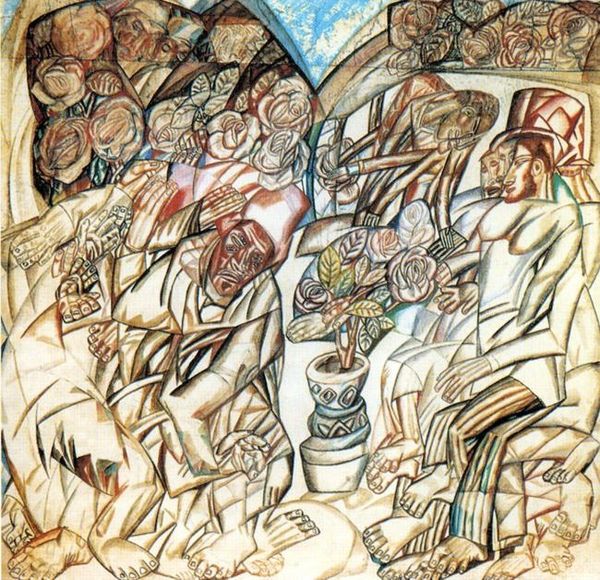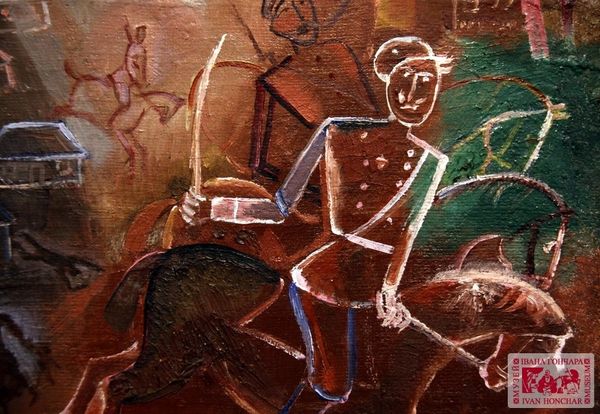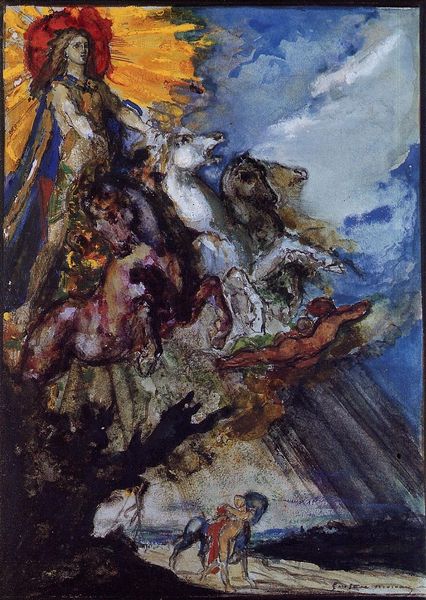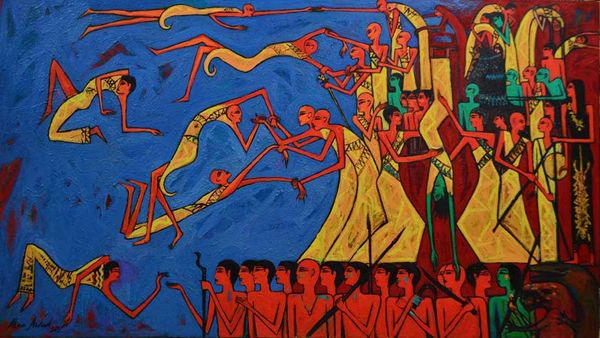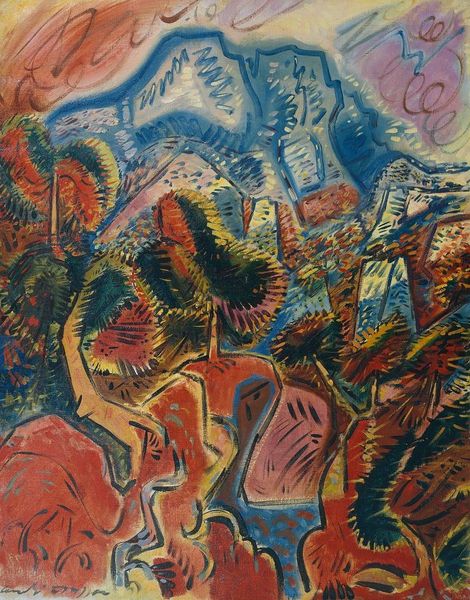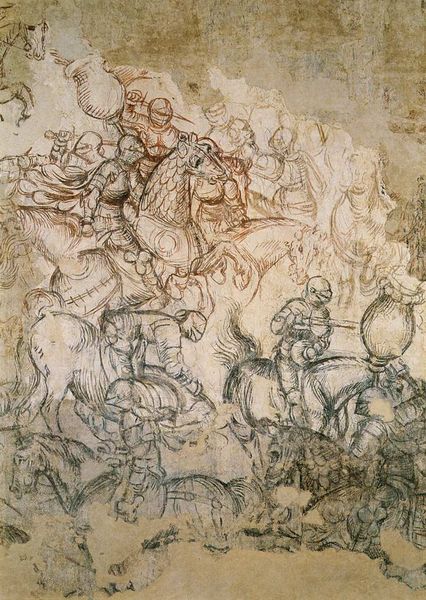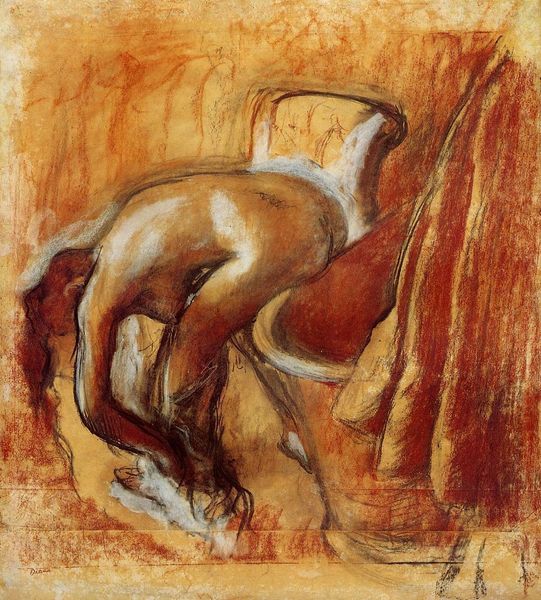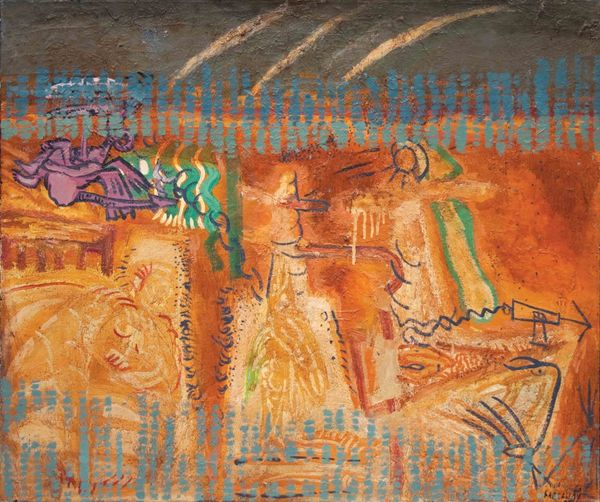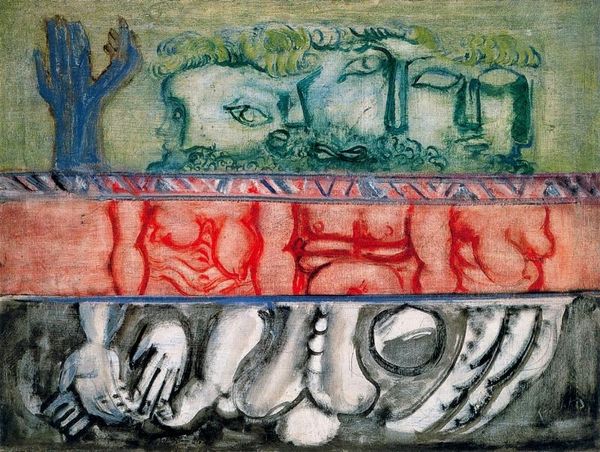
drawing, ink, pencil, pen
#
portrait
#
drawing
#
cubism
#
animal
#
landscape
#
figuration
#
form
#
ink
#
roman-mythology
#
pencil
#
horse
#
mythology
#
line
#
pen
#
history-painting
Copyright: Pablo Picasso,Fair Use
Curator: This frenetic drawing, made in 1936, is titled "Minotaur is wounded, horse and personages," and it resides now at the Musée Picasso in Paris. Editor: The whole scene has an edge of violence to it, I can feel it even from here. It’s hectic—lots of lines crisscrossing—but look closer. He layers pencil, pen and ink… a real study in tone and movement. Curator: Picasso had a lifelong fascination with the myth of the Minotaur, didn't he? Half-man, half-bull—he represents raw passion, instinct, the darker aspects of our nature. This work is very telling about his evolving emotional state back then. Editor: Right, but what does it really tell us? It’s a material record. He’s using humble materials: paper, ink, pencil… mass-produced objects transformed through artistic labor into something that fetches millions today. Isn’t it ironic? Curator: I think it also hints at personal turmoil, almost autobiographical in nature, and the horse is quite prominent here; a recurring symbol for Picasso representing light and purity—under duress in this scene, I might add. The Minotaur, brought to his knees and defeated, mirrors inner conflicts made visual. Editor: True, but notice how the wounded Minotaur dominates the lower portion of the composition, asserting weight and materiality. Then you see the delicate renderings of the figures almost dissolving into the wall behind it. The whole thing brings to mind an industrial process—materials crushed, refined, and repurposed. Curator: Well, that's one perspective! I see instead, the struggle playing out, but a struggle resolved. I do think he eventually integrates that raw power into his own artistic persona and emerges even stronger. Editor: Perhaps it really is about transformation, seeing what’s broken being remade into something that sells—resonates—after all these years. Art really is about materials, labor and our reaction to them. Curator: I think we both landed somewhere in the middle in the end. Picasso often manages that synthesis: the intimate wrestling with the universal.
Comments
No comments
Be the first to comment and join the conversation on the ultimate creative platform.


